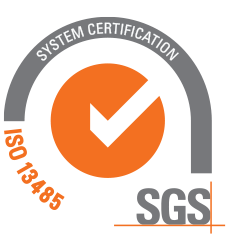|
See all News/Events
Talley step up in class for powered PAC mattresses and cushions29th March 2017 Current guidelines and legislation around medical device classification is ambiguous and open to interpretation. This ambiguity has resulted in some manufacturers classifying their powered PAC mattresses as Class I devices, while others opt to classify their products as Class IIa devices. At first glance classifying a powered support surface as Class I or Class IIa may seem an arbitrary, irrelevant, peripheral issue to procurement, clinicians, healthcare providers and patients, however in order to make an informed decision when purchasing and using powered PAC support surfaces it is imperative to understand the implications associated with the different medical device classifications. Manufacturers registering their powered PAC support surface as a Class I medical device can self-certify and CE mark their product without any compulsory external, independent auditing of the product Technical File. Therefore just because a Class I product has a CE mark it does not mean the claims and product performance have been externally audited. This is not the case for manufacturers registering their powered PAC support surfaces as Class IIa and by placing their products into this category they voluntarily accept the far greater regulation and controls that come with this classification. Ultimately this grey area in the current regulation represents a significant potential risk for healthcare providers. Where the powered PAC support surfaces being used under patients are Class I devices, these are effectively unregulated. Therefore claims of performance and safety have not been independently verified. Where providers are using Class IIa devices they can be confident that these devices are subjected to far greater scrutiny and regulation and that all of the manufacturers claims around product performance and safety are independently verified by a recognised Notified Body. In simple terms you can be confident that a Class IIa device will safely deliver the performance and therapy that your patients require. The same cannot be said for devices registered as Class I. Without wishing to press the ‘panic button’ the current ambiguity regarding powered PAC mattress classification and the lack of regulation around Class I medical devices makes it entirely possible that some powered PAC support surfaces may have no Technical File documentation and no Clinical Evaluation report. If this ‘worst case’ scenario is true then these products are effectively being placed under patients despite being potentially illegal and/or dangerous. NHS Trusts and other healthcare providers have the potential to drive this issue from the ‘bottom-up’ by insisting that only powered support surfaces with Class IIa device classification are considered for use. Companies with nothing to hide should be more than happy to talk through the documentation that stands behind their products and supports their claims and their Class IIa device classification. At least by doing this it would ensure that any powered support surfaces used by the provider were legal, safe and effective. This is the minimum that patients and providers deserve. Operations Director Kevin Mearns said; ‘Without understanding the current ‘grey area’ around powered pressure area care support surface standards and classification and the vast difference in regulation between Class I and Class IIa medical devices how can healthcare providers ever be expected to make a fully informed choice when choosing one product over another?’ Particularly when suppliers continue to make claims regarding product pressure regulation, and treatment of pressure ulcers, some without any outside scrutiny of the claims they are making! ‘Having powered PAC mattresses and cushions as Class IIa medical devices effectively raises the bar with regard to product quality and from a customer perspective it guarantees all performance and safety claims made come under scrutiny form an independent Notified Body ‘We are delighted to be presenting a clinical poster at next month’s Tissue Viability Society conference in Birmingham where we take a more in depth look at this very important topic.’ -7-1490796575.jpg)
|
-A-DHG-Company-01-7-1614716979.png)

